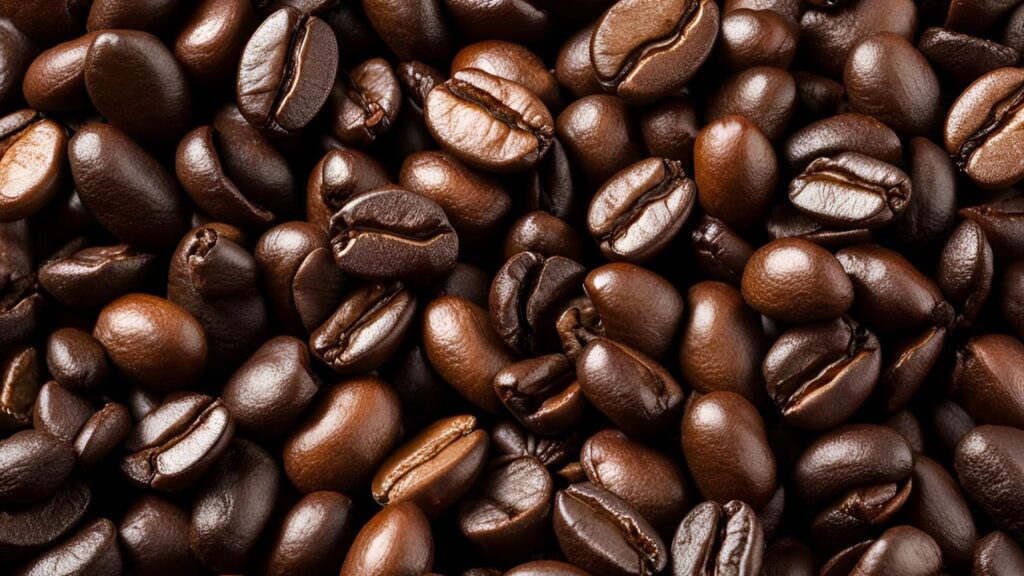Roasting coffee beans usually takes between 7 to 15 minutes, depending on the desired level of roast. A light roast, which gives the coffee a mild flavor, takes about 7 to 10 minutes. For a stronger, more intense flavor, the beans can be roasted longer, around 10 to 15 minutes, to create a dark roast. During this time, the beans are heated at high temperatures, which changes their color, reduces moisture, and enhances the coffee flavor.
What is coffee roasting?
Coffee roasting is a process where green coffee beans are heated until they turn brown and become ready to brew into coffee. The heat makes the beans change color, smell, and taste. This is why your coffee tastes so good!
How long does it take?
Roasting coffee beans is a process where raw, green coffee beans are heated until they turn into the dark, flavorful beans we use to make coffee. The time it takes to roast coffee beans depends on how you want your coffee to taste.
- Light roast: If you like light coffee, the beans are roasted for a shorter time, usually about 7 to 10 minutes. This makes the coffee taste milder and less bitter.
- Medium roast: If you prefer a balanced flavor, you might roast the beans for about 10 to 12 minutes. This is called a medium roast.
- Dark roast: For a strong and bold coffee flavor, the beans need to be roasted longer, about 12 to 15 minutes. Dark roast coffee can taste a bit bitter.
During roasting, the beans get very hot, often between 370 to 540 degrees Fahrenheit. This high heat changes the color of the beans, makes them lose water, and helps develop the rich coffee flavors. The longer the beans roast, the stronger the coffee will taste.

How do you know when the coffee beans are ready?
Knowing when the coffee beans are ready to be taken out of the roaster is very important. Roasters look for certain signs to tell them when the beans are perfectly roasted:
- Color: The beans change color from green to yellow, then to light brown, and finally to dark brown. The shade of brown helps the roaster decide if it’s a light, medium, or dark roast.
- Smell: As the beans roast, they start to release a strong, pleasant coffee aroma. The smell changes as the beans roast longer, becoming richer and more intense.
- Sound: Listening for the first and second cracks is a big clue. The first crack tells the roaster that the beans are light roasted, and the second crack signals they are dark roasted.
What equipment Is used to roast coffee beans?
Roasting coffee beans requires special equipment. Here are some of the tools that are commonly used:
- Home roasters: Some people roast coffee beans at home using small machines that can roast just a few beans at a time. These machines are great for beginners.
- Commercial roasters: Big coffee companies use large, industrial machines that can roast many pounds of beans at once. These machines are more advanced and can control the roasting process very carefully.
- Oven: Believe it or not, you can also roast coffee beans in an oven or a frying pan! This method is more hands-on and requires a lot of attention, but it can be fun to try.
What happens during roasting?
As the beans roast, they go through several changes:
- First crack: After a few minutes, you might hear a crackling sound. This is called the “first crack.” It means the beans are starting to turn brown and release their flavor.
- Second crack: If you keep roasting, you’ll hear another crack, called the “second crack.” The beans become darker, and the flavor gets stronger.
- Stopping the roast: The roast is usually stopped right after the second crack or a little before, depending on how dark you want the coffee to be.
Why does roasting time matter?
The time it takes to roast the beans affects the taste of the coffee. A shorter roast time will give you a lighter, more fruity coffee. A longer roast time will give you a darker, richer flavour.
Conclusion:
Roasting coffee beans is an art. It takes skill and practice to get the timing just right. Whether it’s a quick roast or a slow one, the result is always a delicious cup of coffee! So, next time you sip on your favourite coffee, remember the journey those beans went through, from roasting to your cup.
